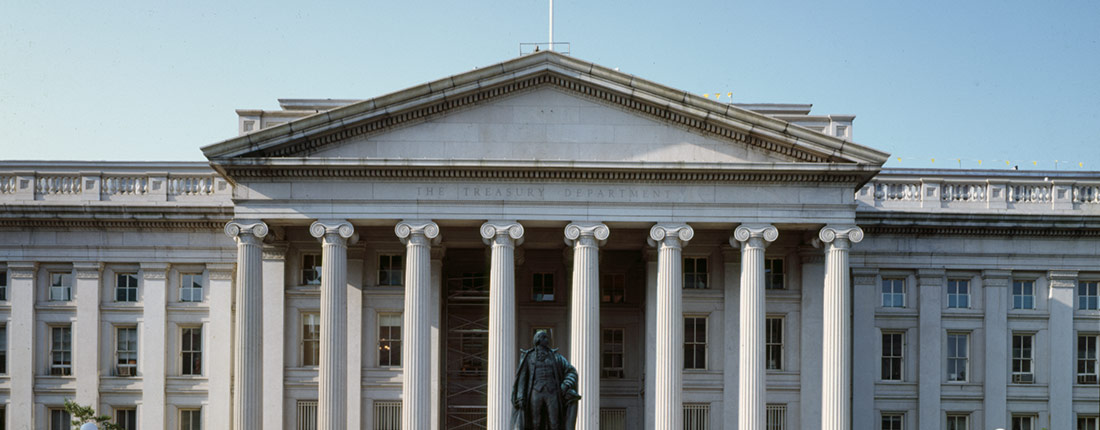2023 Roundup: Federal Policy Developments in Neighborhood Revitalization
December 18, 2023

This has been a big year for federal policy developments that can help communities address vacancy and stabilize neighborhoods. Read on to learn more about the 2023 federal programs and policies in community revitalization you might have missed.
FHA Improvements to the 203(k) Rehab Mortgage Program
The 203(k) rehab mortgage program allows a person to buy a house that needs to be rehabbed or modernized by consolidating the finance of the home purchase and cost of rehabilitation through a single mortgage. It also lets homeowners finance the rehabilitation of their existing home.
The 203(k) program is historically underutilized. But, as we shared with the Federal Housing Administration (FHA) earlier this year in response to its Request for Information, it has the potential to be a vital community revitalization tool. It also presents unique opportunities for the renovation of land bank owned single-family vacant properties.
Community Progress is pleased to report that FHA recently announced substantial changes to the 203(k) program, including:
- Increasing maximum allowable rehab costs and extending rehab timelines to better align with current costs and projects;
- Allowing more materials costs to be drawn up front; and
- Creating more incentives to deepen the bench of 203(k) consultants who are a crucial part of the program.
Community Reinvestment Act Modernization Is Here
The long-awaited Community Reinvestment Act (CRA) rulemaking, issued jointly by all three bank regulators (the Federal Deposit Insurance Corporation, the Federal Reserve Banks, and the Office of the Comptroller of the Currency) explicitly addresses comments submitted by Community Progress and other coalition partners. The rulemaking recognizes the important role of land banks in community revitalization, neighborhood stabilization, and the development of affordable housing.
The Final Rule, released in October, provides guidance on which provisions regulated entities should use to receive CRA credit. This guidance includes investment in and loans to land banks and support for disposition of vacant or foreclosed land as revitalization and affordable housing development activities.
The Final Rule explicitly states that activities supporting land banking and disposition of vacant land qualify for CRA credit, “…as these are often central elements of neighborhood redevelopment efforts” (Community Reinvestment Act Final Rule, page 235). We applaud federal regulators for recognizing the powerful role land banks play in efforts to uplift disinvested communities.
The new CRA regulations will drive major changes to how regulated banking institutions do business in communities across the country and receive scores for their CRA performance. While we are disappointed the regulators did not go further to explicitly consider race in the new CRA implementation, this overhaul presents several positive steps forward in recognizing the modern realities of how banking, lending, and investment practices have shifted since the last regulations were issued in 1995.
An interagency Overview document and a brief Fact Sheet help break down broadly what’s contained in the nearly 1,500 page Final Rule. The Final Rule will take effect on April 1, 2024, with staggered bank compliance dates beginning in 2026.
ARPA SLFRF Interim Final Rule Clarifying the Definition of “Obligation”
Fresh on the heels of a more comprehensive 2023 Interim Final Rule expanding eligible uses, the Treasury Department has issued another Interim Final Rule on the American Rescue Plan Act State and Local Fiscal Recovery Fund (ARPA SLFRF). This latest Rule, issued November 20 and taking effect immediately, amends Treasury’s definition of “obligation” for purposes of ARPA SLFRF compliance.
As most stakeholders involved in deploying ARPA SLFRF allocations are aware, funds generally must be obligated by December 31, 2024, and expended by December 31, 2026. While those are unchanged in the latest Rule, Treasury amended the definition of obligation to account for anticipated challenges some ARPA SLFRF recipients expressed in reporting, administration, and compliance costs incurred after December 31, 2024. Accordingly, Treasury will recognize ongoing costs, such as reporting and compliance costs, single audit costs, record retention and internal control requirements, and environmental compliance costs within this more flexible definition of obligation.
To take advantage of this additional flexibility, ARPA SLFRF recipients must submit the following to Treasury:
- By April 30, 2024: A reasonably justified and documented estimate of the amount of SLFRF funds it will use to cover these ongoing expenditures.
- At award closeout: A report of the final amount spent on these costs.
Additionally, this Interim Final Rule clarifies that subrecipients of SLFRF funds are not subject to the 2024 obligation deadline and clarifies procedures related to contract replacements and amendments. Treasury prepared a two-page Reference Guide explaining this Interim Final Rule and updated the SLFRF Compliance and Reporting Guidance.
For more information about ARPA SLFRF, visit our ARPA resources page.
Community Progress is proud to be a resource on regulatory actions and federal policy impacting communities and revitalization work. For any questions about these rulemakings, please contact Rob Finn, Vice President of Policy and Research, at [email protected].
Subscribe to join 14,000 community development leaders getting the latest resources from top experts on vacant property revitalization.
